Sonic Revolution: A Brief Evolutionary Journey of Fender Amps
10mins read • Bryan Clark
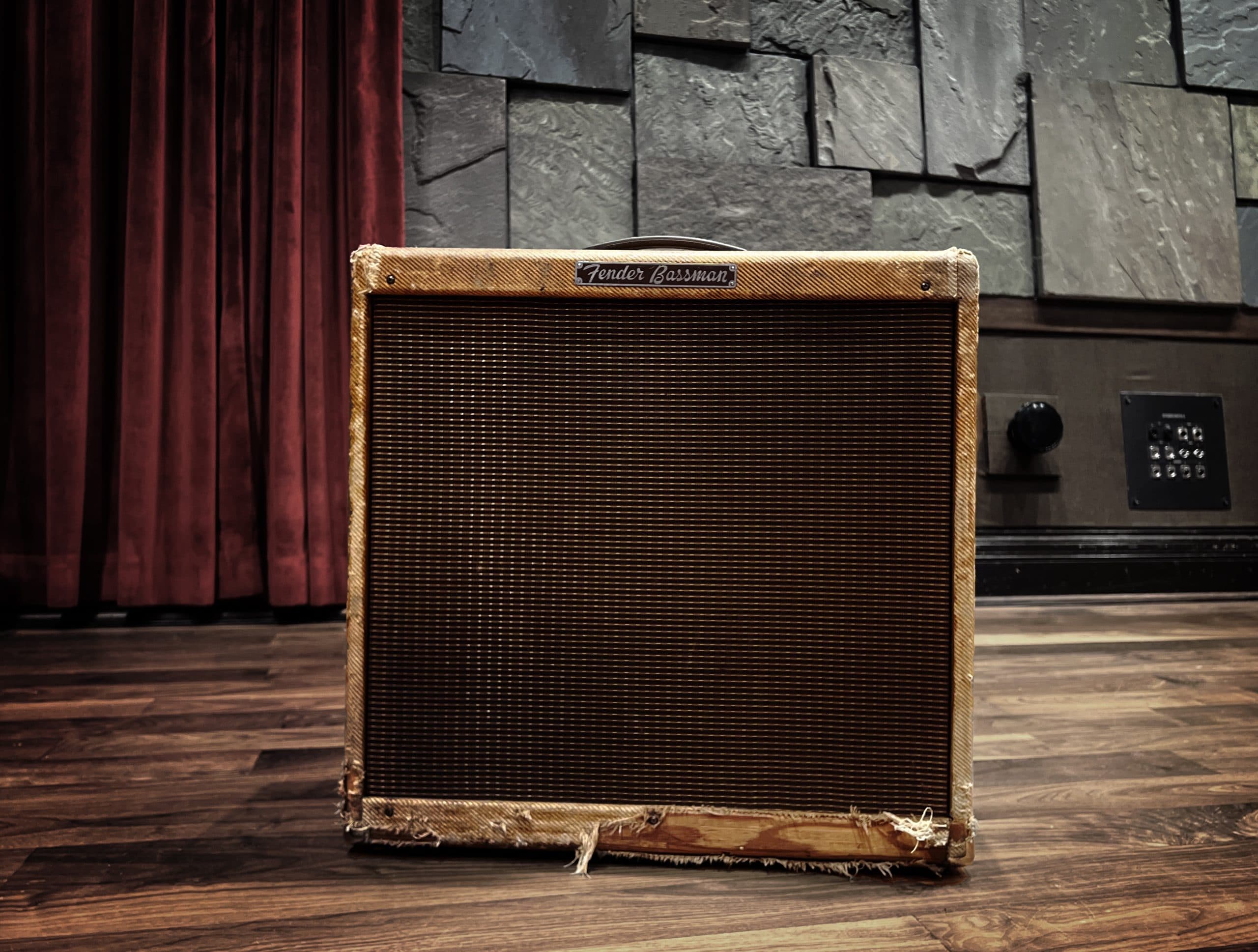
Jump To Section
Sonic Revolution: A Brief Evolutionary Journey of Classic Fender Amps
The Beginning
The history of Fender Amps is an electrifying tale that weaves together innovation, iconic sound, and a profound impact on the world of music. From the early Southern California days of Leo Fender‘s visionary designs to the present, Fender Amps have become an integral part of the worldwide sonic landscape. I’m going to dive into some of the captivating historical milestones of Fender Amps, trace their origins, groundbreaking achievements, and lasting legacy.
Woodies - 1946 to 1948
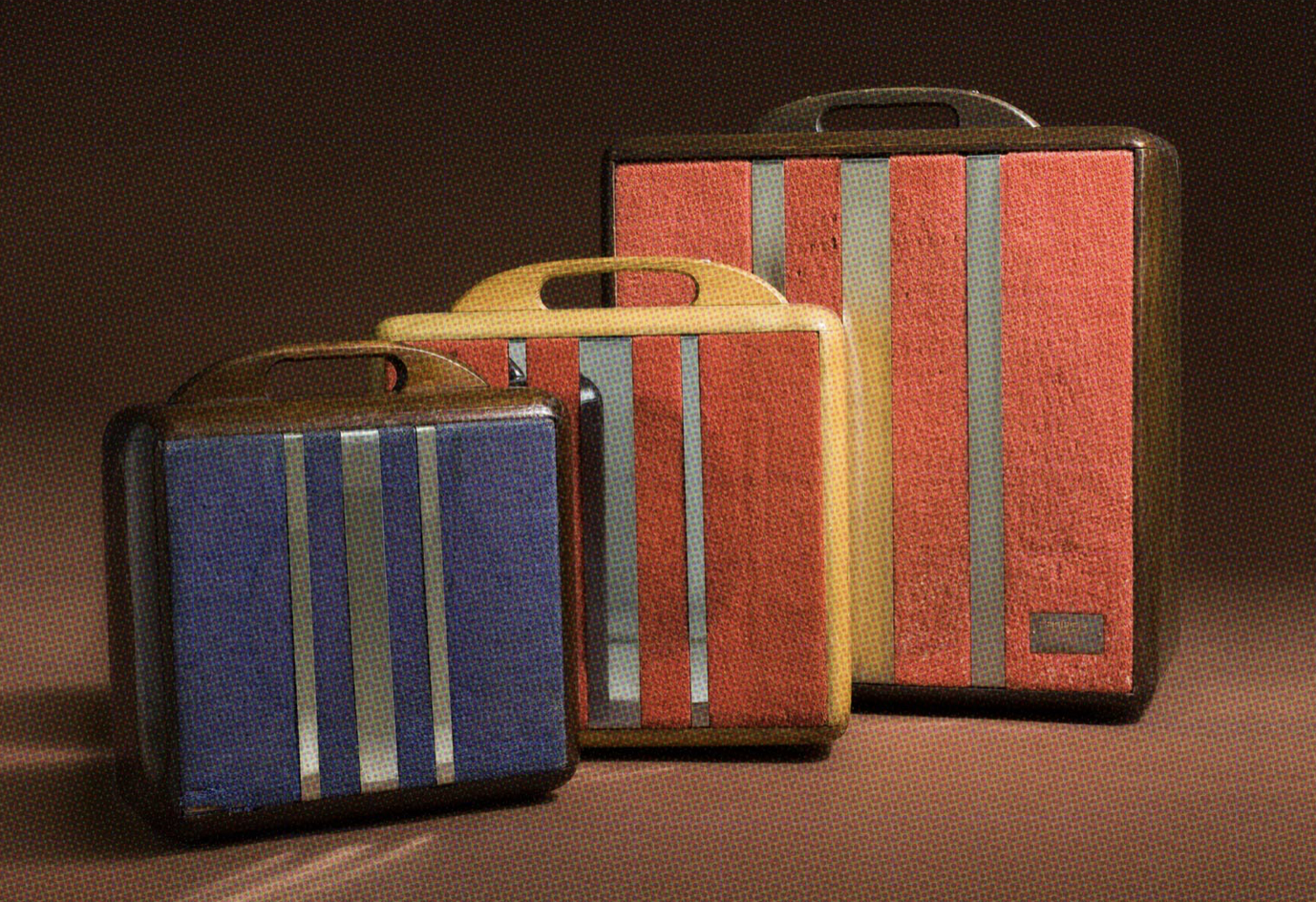
In 1946, the legendary inventor Leo Fender founded the Fender Electric Instrument Manufacturing Company in Fullerton, California. While initially focused on guitars, Fender soon recognized the need for amplification to enhance the sound and volume of electric guitars. The earliest of Fender amps appeared by the spring of 1946 shortly after Fender dissolved the K&F Manufacturing Corp. Known as “woodies” these three early amps – Professional (25-watts, six tubes), Deluxe (14-watts, five tubes) and Princeton (6-watts with three tubes) – were designed to be used with Fender’s lap steel guitars and were built with top mounted wooden handles on hard wood cabinets (maple, walnut, and mahogany), and attractive grille cloths (red, blue and yellow). These models also had three protective metal strips that ran over the speaker mount and added sparkle to the eye-catching design.
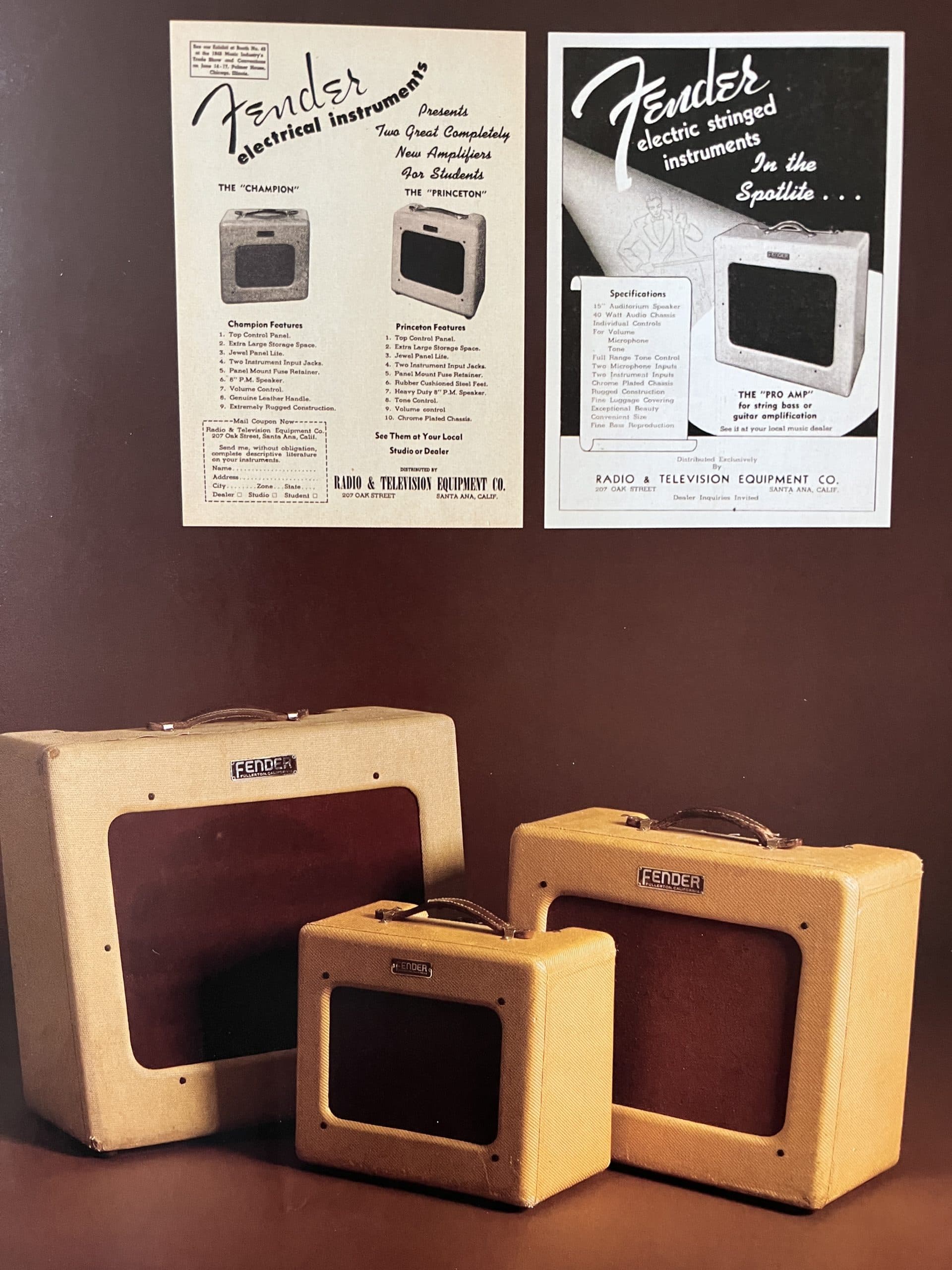
1947-1953 TV-Front Amplifiers:
As the “Woodie” amps were being phased out, the 7 new models of amps made at the Fullerton factory during this period were covered in a new Butterscotch colored tweed luggage linen with two-tone vertical stripes and a then standard, dark brown grille cloth. These tweed cabinets were sprayed with a coat of clear lacquer for added protection. They also featured new front mounted “FENDER Fullerton California” rectangular name plates and were built from pine wood with lock jointed corners. These amps were aimed at the electric steel guitar market and the ever-growing electric guitar market with Fender’s earliest prototype of the Esquire/Telecaster prototype built in 1949.
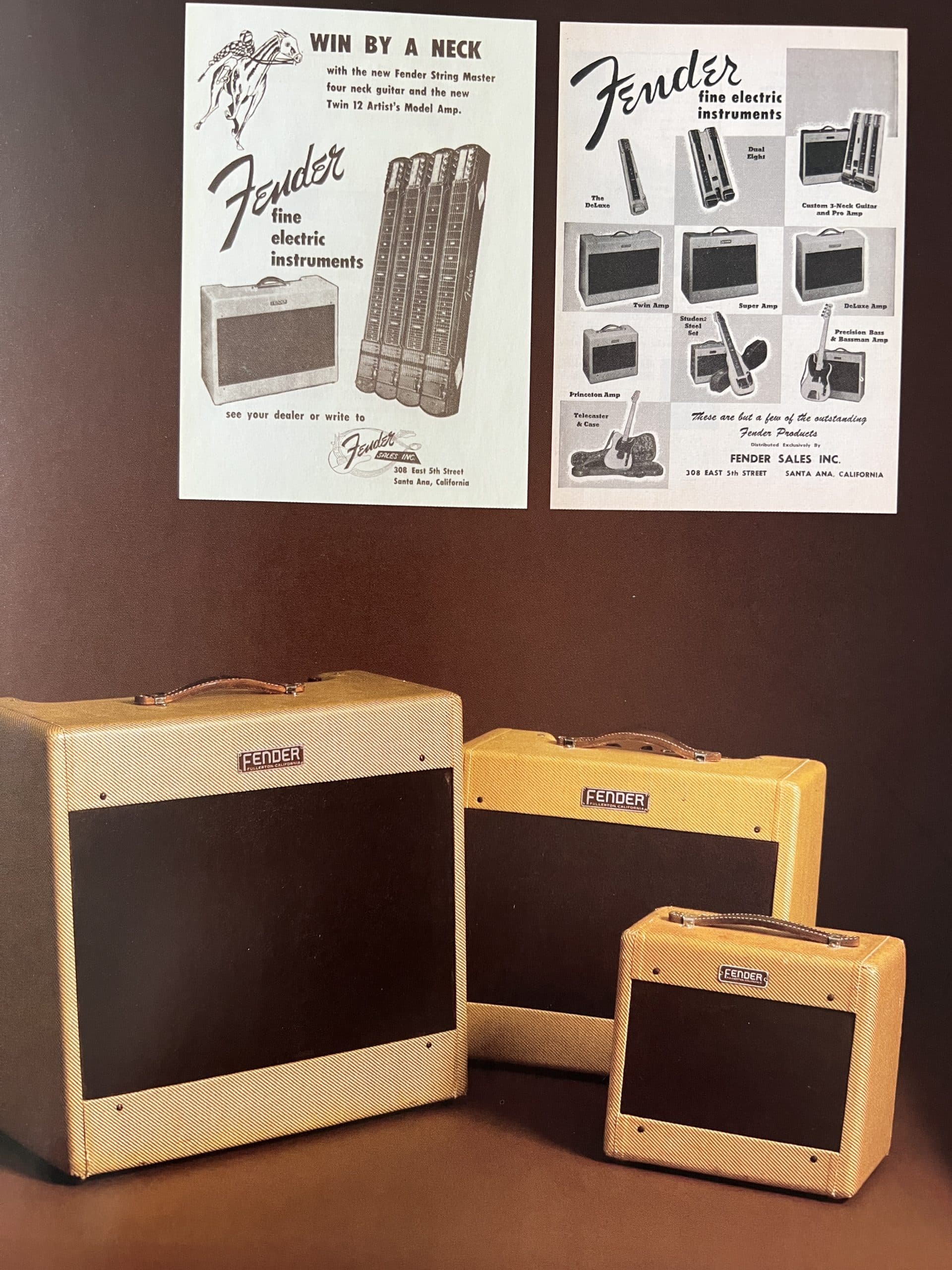
1952 -1955 Wide Panel Amps:
Fender’s reputation for building high quality and reliable amplifiers was firmly established by the early 1950s. Players from wide variety of genres were now using Fender amps and Leo found himself in the enviable position to no longer have to rely on local musicians in southern California to help boost sales and promote brand awareness. Fender amps were selling in big numbers across the country.
At the 1952 NAMM show (National Association of Music Merchants), the Twin was introduced. Although the amp wouldn’t be widely available until the second quarter of 1953, it featured two 12″ speakers and sported 25 watts of playing power. The Twin was also the first Fender amp to feature treble and bass controls that greatly expanded the tonal possibilities of the amp.

1955 -1964 Narrow Panel Amplifiers:
Fueled by rock’n’roll, the 1950s marked the beginning of the “Tweed Era” for Fender Amps. Characterized by their new slender metal Fender marque nameplates, distinctive tweed fabric covering, and new narrow panel designs at the top of and bottom of every speaker baffle, these amplifiers featured circuits designs that have become legendary in the world of guitar amplification.
Leo Fender and Freddie Taveres (co-desinger of the Stratocaster), continued to expand and refine their designs and by 1955 the Fender amp line has blossomed into 11 production models that covered virtually every need for any type of guitar player:
Champ: 1 x 6″speaker, 4 watts
Princeton: 1×8″ speaker, 4.5 watts
Harvard: 1 x 8″ or 1 x 10″ speaker, 10 watts
Vibrolux: 1 x 10″ speaker, 10 watts
Deluxe: 1 x 12″ speaker, 15 watts
Tremolux: 1 x 12″ speaker, 15 watts
Super: 2 x 10″ speakers, 20 watts
Pro-Amp: 1 x 15″ speaker, 26 watts
Bandmaster: 3 x 10″ speakers, 26 watts
Bassman: 4 x 10″ speakers, 50 watts
Twin: 2 x 12″, 50 and 85 watt
These amplifiers emerged as cornerstones of the Fender lineup, cherished for their rich, warm tones and ability to handle increased volume without distortion. Notably, the now legendary 50-watt Bassman amp, had a very smooth and thick overdrive and subsequently played a significant role in shaping the early sound of rock ‘n’ roll by influencing musicians like Freddie King, Eric Clapton, Keith Richards, and Jimi Hendrix. This same ’59 Tweed Bassman circuit design was also the basis for Jim Marshall’s early amp designs in England.
The last amp of this line up that finally brought the “tweed” era to a close was the best-selling, small but mighty, Champ. In fact, it transitioned directly to black Tolex covering and bypassed the brown/wheat Tolex transitional amps altogether due to strong sales of its “tweed” iteration.
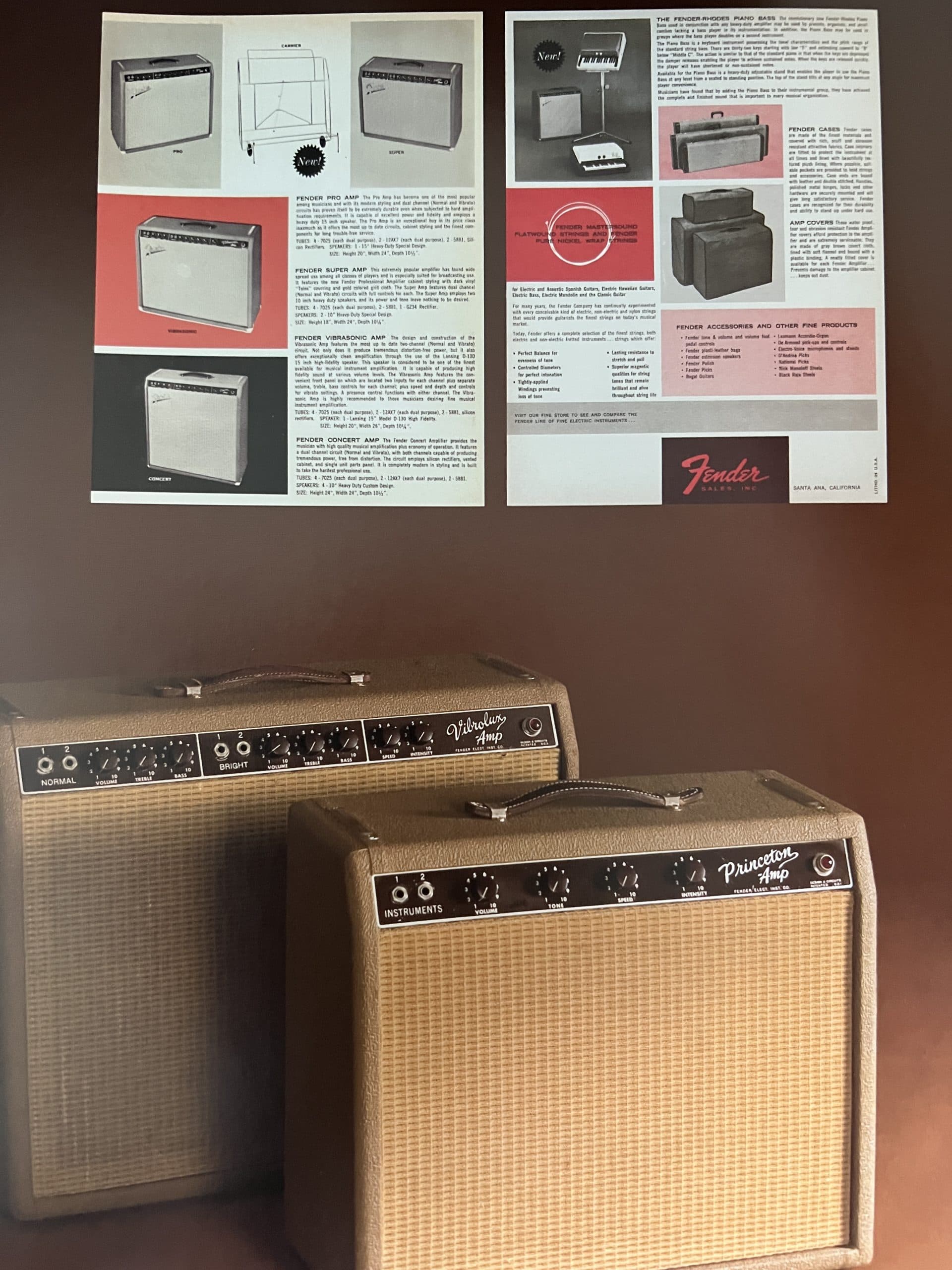
1961 – 1963 Brown Face Amps:
Fender experimented with different color combination between 1959 and 1963 as well as redesigning the cabinet for the Princeton, Vibrolux, and Deluxe amps. The grille cloths came in either oxblood, wheat, or brown colors depending on the model. Brown and wheat grilled amps had leather handles from the “tweed” era and were without any Fender badge except for the small script under the model name that read “Fender Elect. Inst. Co”. The other amp models that had brown or oxblood grille cloths sported a flat Fender logo at the top left of the speaker baffle and a plastic handle with nickel-plated ends which would become standard on all future Fender amp designs.
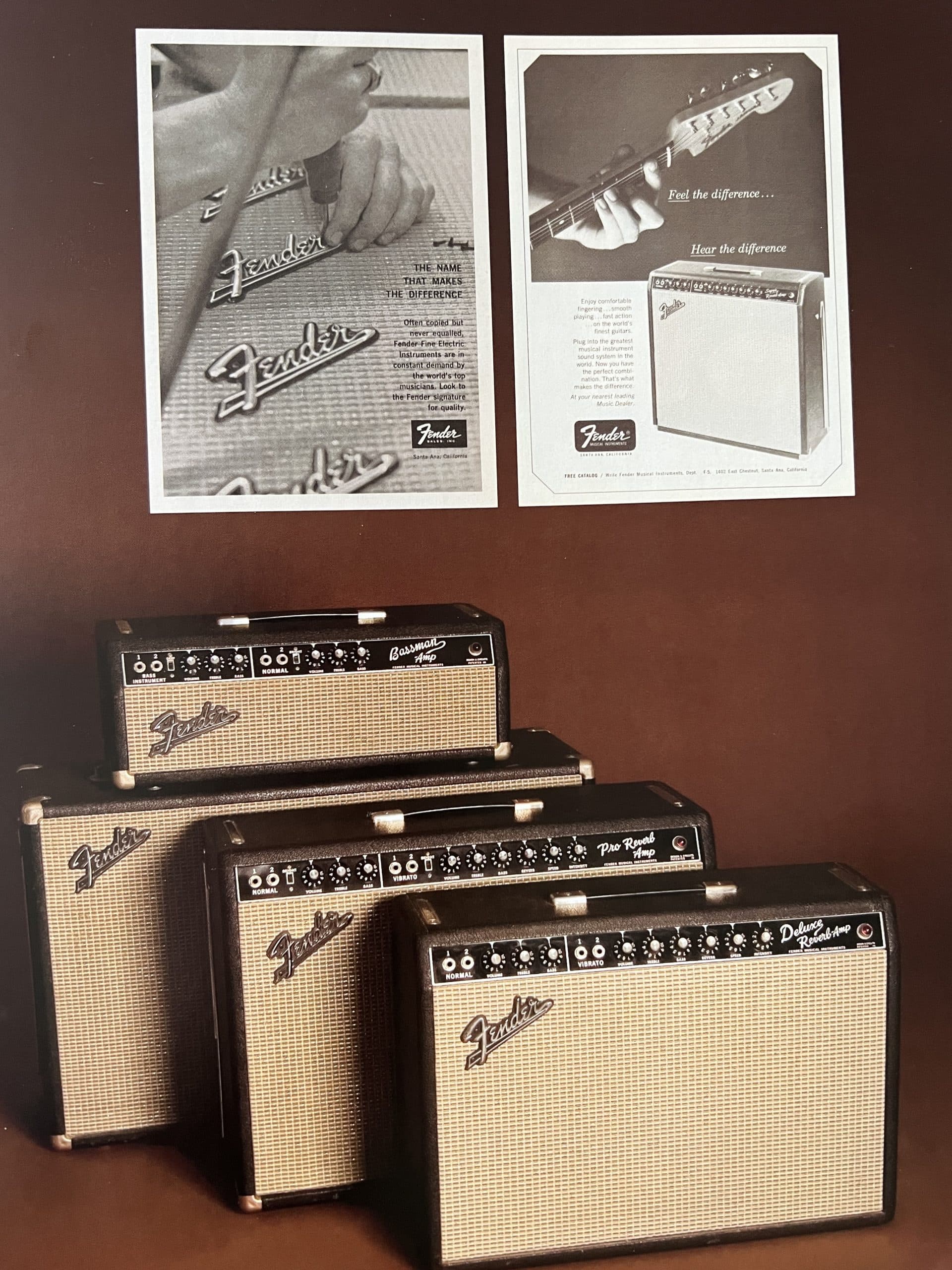
1963 – 1968 Blackface Amps:
In the mid-1960s, Fender transitioned from the Tweed and Brownface era to the Blackface Era, marked by a switch to black control plates, rugged black Tolex( that wouldn’t fray, get dirty, or scar from touring), a new Fender logo with a tail that ran underneath the word Fender, and circuit designs that offered a cleaner, more refined sound. Models such as the Deluxe Reverb, Super Reverb, and Vibroverb exemplified this era, offering enhanced reverb and vibrato effects. At the time Fender dominated the world market in amp and instrument sales – only Vox and Marshall would emerge as serious competitors in the upcoming years.
The entire Fender amp line had grown even more into 19 different models catering to every type of player:
Champ: 1 x 8″speaker, 5 watts
Vibro-Champ: 1 x 8″speaker, 5 watts
Princeton: 1×10″ speaker, 12 watts
Princeton Reverb: 1×10″ speaker, 12 watts
Deluxe: 1 x 12″ speaker, 20 watts
Deluxe Reverb: 1 x 12″ speaker, 20 watts
Pro-Amp: 1 x 15″ speaker, 25 watts
Bandmaster: 3 x 10″ speakers, 26 watts
Tremolux: 1 x 12″ speaker cabinet, 30 watt amp head
Vibrolux: 1 x 12″ speaker, 30 watts
Vibrolux Reverb: 2 x 10″ speakers, 35 watts
Vibroverb: 1 x 15″ speaker, 40 watts
Pro-Reverb: 2 x 12″ speakers, 40 watts
Super Reverb: 4 x 10″ speakers, 40 watts
Bandmaster: 2 x 12″ speaker cabinet, 40 watts
Bassman: 2 x 12″ speaker cabinet, 50 watts
Showman: 1 x 12″ or 1 x 15″ speaker cabinet, 85 watts
Dual Showman: 2 x 15″ speaker cabinet, 85 watts
Twin: 2 x 12″ speakers, 85 watts
CBS Era Silverface Amps
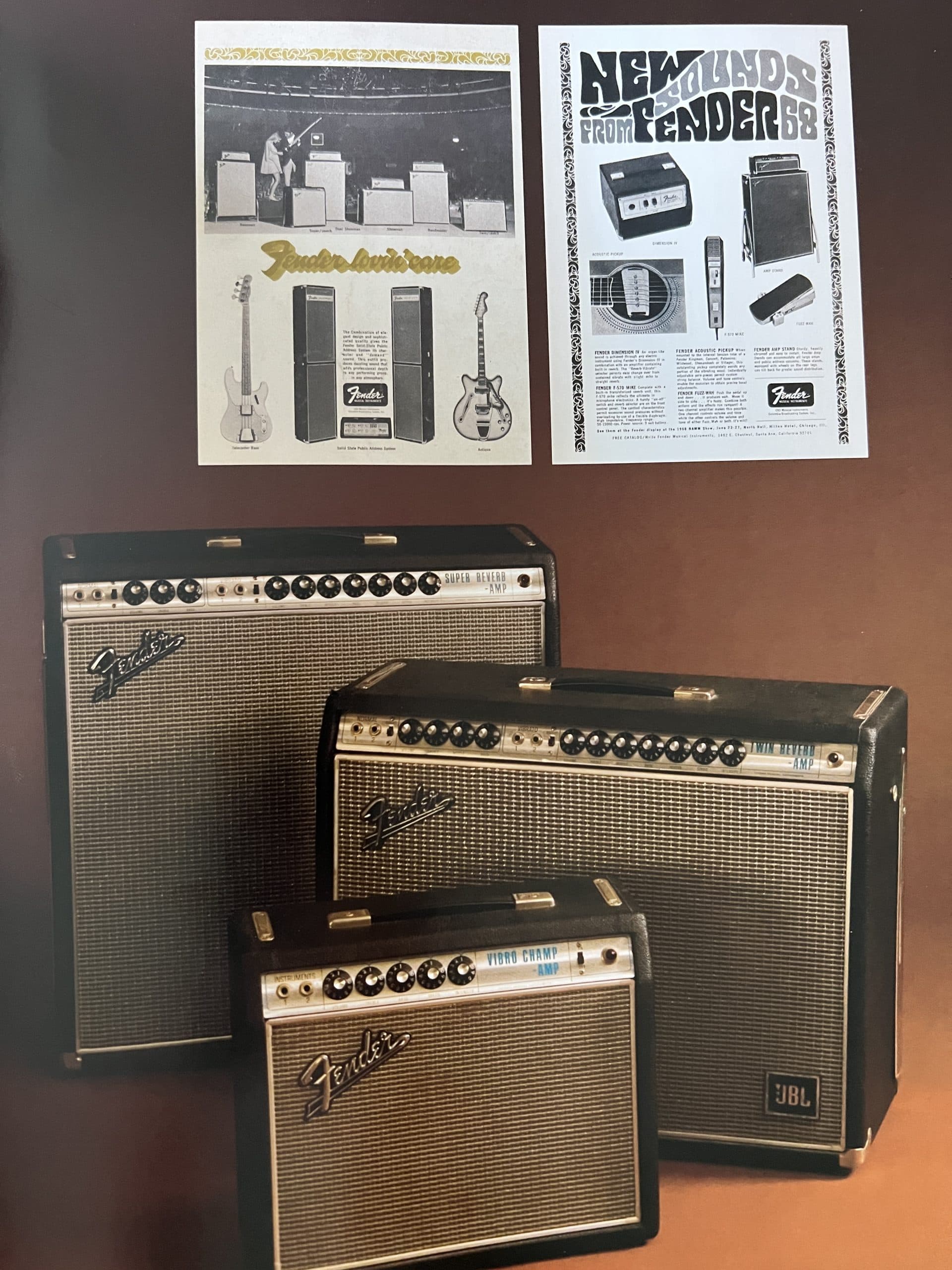
In 1965, Fender sold his company to CBS (Columbia Broadcasting System), for 13 million dollars – approx. $123 million in today’s dollars – and thus began a period often referred to as the CBS Era.
Just 12 months earlier, CBS paid slightly over $11 million dollars for the majority share of the New York Yankees. This is a good indicator of just how much Leo Fender’s one room instrument company from Fullerton, California had risen from obscurity to become a globally recognized brand all in a mere twenty years!
CBS corporate ownership immediately brought about institutionalized cost-cutting measures that severely impacted the quality and consistency of every Fender product. By the late 1968, Fender introduced cosmetic changes, replacing the black control plates with silver ones, giving rise to the Silverface Era. Although these amps largely retained their excellent sound quality, they are often considered less desirable due to circuit design modifications and changes in component quality.
I can personally attest to this. I own a silverface Vibrolux that I bought many years ago very cheaply and immediately had a trusted amp tech (Magnetic Flux’s John Capito here in Nashville, TN) gut the circuitboard and rewire it point to point with blackface Vibrolux specs. Now, it sounds the same as a vintage blackface but for the price of a silverface – so don’t overlook these beauties if you’re willing to modify them (to either blackface, or silverface “upgraded” specs) they can be amazing amps.
Fender from the 70’s to Present:
Since the 1970s, Fender Amps have gone through various changes and developments, reflecting the evolution of music and technology. Let’s explore the significant milestones and innovations in Fender Amps during this period.
Post-CBS Era: In 1984, Fender released the “Princeton Reverb II” and “Deluxe Reverb II” amps, which featured updated designs and circuits. These amps incorporated solid-state technology in the preamp section while retaining tube power sections, offering a balance between vintage tone and modern reliability.
The ’80s also witnessed the introduction of the “Red Knob” series, a line of solid-state amplifiers that included models like the “Champ 12,” “Super 60,” and “Twin Reverb II.” These amps, characterized by their distinctive red control knobs, aimed to provide affordable options with versatile tones and onboard effects.
Following the acquisition of Fender for $12.5 million by William Schultz and his Servco Pacific Capital team in 1985, the company began implementing changes to restore the brand’s reputation and in 1987 Fender opened up its Custom Shop in Corona, California whoch debuted two new custom Strats: Yngwie Malmsteen and Eric Clapton signature models.
The Modern Era (1990s-2000s): In the 1990s, Fender focused on reissuing classic amplifiers to cater to the demand for vintage tones. The company introduced the ’59 Bassman reissue, recreating the sought-after sound of the original Bassman from the 1950s. Additionally, Fender released the “Blues Junior” in 1995, a compact all-tube amp with a warm and bluesy tone, appealing to both professional musicians and enthusiasts.
Fender also launched the “Hot Rod” series during this time, which featured popular models such as the “Hot Rod Deluxe” and “Hot Rod DeVille.” These amplifiers combined vintage-inspired aesthetics with modern features like additional gain stages, increased power, and enhanced control options, delivering versatile tones suitable for a wide range of musical genres.
Digital Innovation and Modeling: As the digital age unfolded, Fender embraced new technologies and ventured into digital modeling amplifiers. In 2001, Fender introduced the “Cyber-Twin,” a groundbreaking amplifier that utilized digital processing to emulate the sounds of classic Fender tube amps. This allowed guitarists to access a wide variety of tones in a single amplifier, replicating the characteristics of vintage models without the need for multiple amps.
In recent years, Fender expanded its digital offerings with the “Mustang” series, which featured a range of modeling amplifiers and compact practice amps. These amps incorporated advanced digital processing, providing a vast selection of amp models, effects, and presets to suit different playing styles and musical genres.
Continued Legacy and Modern Innovations: In the present day, Fender continues to refine and innovate its amplifier lineup. The company has introduced several notable models, including the “Tone Master” series, which utilizes digital technology to recreate the tonal characteristics of classic Fender tube amps while offering lighter weight and improved reliability. These Tone Master amps sound really, really good! I was impressed with how well they modeled the performance and feel of the classic blackface era amps. They are super light and great for gigging around town without putting wear and tear on your vintage blackface.
Fender has also expanded its range of low-wattage and portable amplifiers, catering to the needs of gigging musicians and bedroom players alike. Models such as the “Pro Junior IV” and “Acoustasonic” series provide compact solutions without compromising on tone and versatility.
In Parting:
The history of Fender Amps since the 1970s showcases a journey of adaptation, innovation, and reverence for the company’s iconic heritage. Although there were some rough decades, Fender has continuously sought to balance tradition with modern advancements, delivering amplifiers that resonate with musicians across various genres and playing styles. From classic reissues to digital modeling, Fender Amps have remained a vital force in shaping the sonic landscape of contemporary music.


